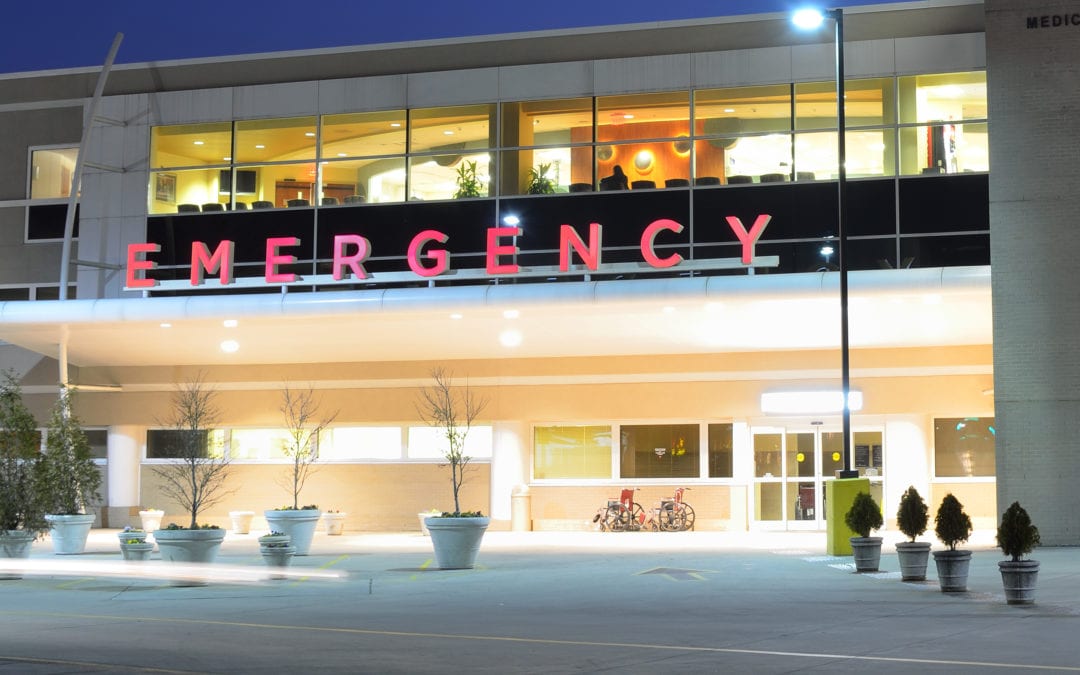You sprain your ankle, have a fever or experience difficulty breathing; do you know where to go for the most appropriate treatment?
There are three basic options when you need medical care:
- Your primary care physician (PCP),
- An urgent care center or
- The emergency room (ER).
Knowing which one to choose helps you get the right kind of medical care.
What’s the Difference?
Visiting your PCP, an urgent care center or the ER provides you with different types and levels of care that are suitable for different situations. Depending on the severity of your condition, different care settings are more or less appropriate.
Your primary care physician provides the most basic, but personalized, medical care. They are the best person to call if you aren’t sure what kind of care you need because they can direct you to the proper care setting. Many primary care physicians set aside same day appointments for patients who need care.
Urgent care centers are a great choice when you can’t wait to see your PCP, but don’t have an emergency situation. Most urgent care centers are open beyond normal business hours and provide convenient access to intermediate medical care.
Emergencies rooms provide the highest level of care and are the best choice for severe situations. When time makes a difference and you need advanced care quickly, call 911 or head for the nearest ER right away. Emergency rooms are also the only of the three options open 24/7 and may be the only choice available in certain situations.
Why Does it Matter?
Choosing the health care setting most appropriate for your situation helps you get the care you need as efficiently as possible. A wrong decision can result in you bouncing from one setting to another or paying higher costs for care. Learning to make good decisions about which setting to visit helps you take control of your care and achieve optimal outcomes. A visit to your PCP or an urgent care center is much less expensive than visiting the ER. By choosing these options when appropriate, you save yourself money and leave the ER staff free to deal with things that are truly emergencies. On the other hand, starting with an urgent care center when you really need the ER can result in delays which may negatively impact your health outcomes.
When to Visit Your PCP
Your PCP is your go-to doctor because they are familiar with your medical history and can help coordinate more advanced care when necessary. Contact them first if you need non-emergency care. They routinely handle chronic illnesses and follow-up appointments, but can also often see patients the same day or the following day for minor injuries or illnesses. Your PCP is the best choice when possible since they know you and your medical history and can take a more comprehensive approach to your current situation. If you need more immediate care, they help determine whether an urgent care center or the ER is more suitable based on your symptoms.
When to Visit an Urgent Care Center
Urgent care centers don’t require appointments and usually offer extended hours, so they are a great choice for intermediate medical care when your PCP isn’t available. They are staffed by doctors and nurses and have many of the same treatment options as an ER, but at a lower cost and usually with a shorter wait time. If you can’t reach your PCP or they don’t have an appointment available soon enough, then visit an urgent care center for non-emergency care. The following are good reasons to visit your PCP or an urgent care center:
- Minor allergic reaction
- Bronchitis
- Cold or flu
- Fever
- Minor asthma attack
- Animal bites
- Sprains and strains
- Cough
- Dehydration
- Sunburn
- Dizziness
- Insect bite
- Ear infection
- Headache
- Minor burns
- Nausea
- Minor head injury
- Sinus infection
- Pink eye
- Rash or other skin irritation
- Minor cuts
- Sore throat
- Urinary tract infection
When to Visit the ER
For life-threatening situations or when you need immediate advanced care, get to an emergency room as quickly as possible. Calling 911 is often the best way to get to an ER because your symptoms could worsen en-route and the emergency personnel can provide immediate care on the way. When you’re in doubt about what type of care you need, it’s better to err on the side of higher care by going to the ER. Seek ER treatment for the following symptoms or any symptom that is extreme in nature:
- Chest pain
- Major head injury
- Severe burns
- Fainting
- Broken bone
- Difficulty breathing
- High fever
- Palpitations
- Severe asthma attack
- Ingestion of obstructive object
- Seizure
- Overdoses
- Pneumonia
- Severe abdominal pain
- Blistering or extensive rash
- Shock
- Unconsciousness
- Shortness of breath
- Bleeding during pregnancy or labor
- Major trauma
- Severe headache
- Uncontrollable bleeding
- Severe vomiting
Learn to be smart about your health by choosing the right medical setting to meet your needs. Matching your symptoms to the appropriate health care setting helps you save time and money while receiving the most suitable care for your situation.

